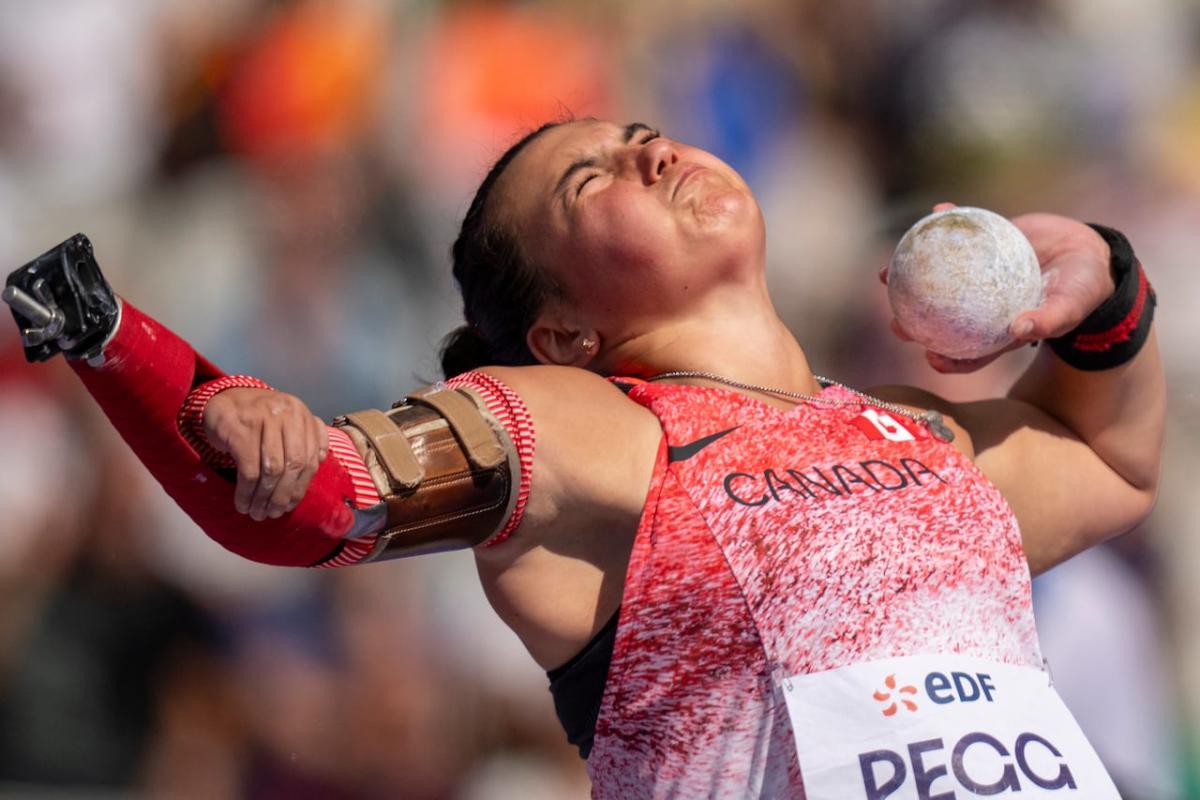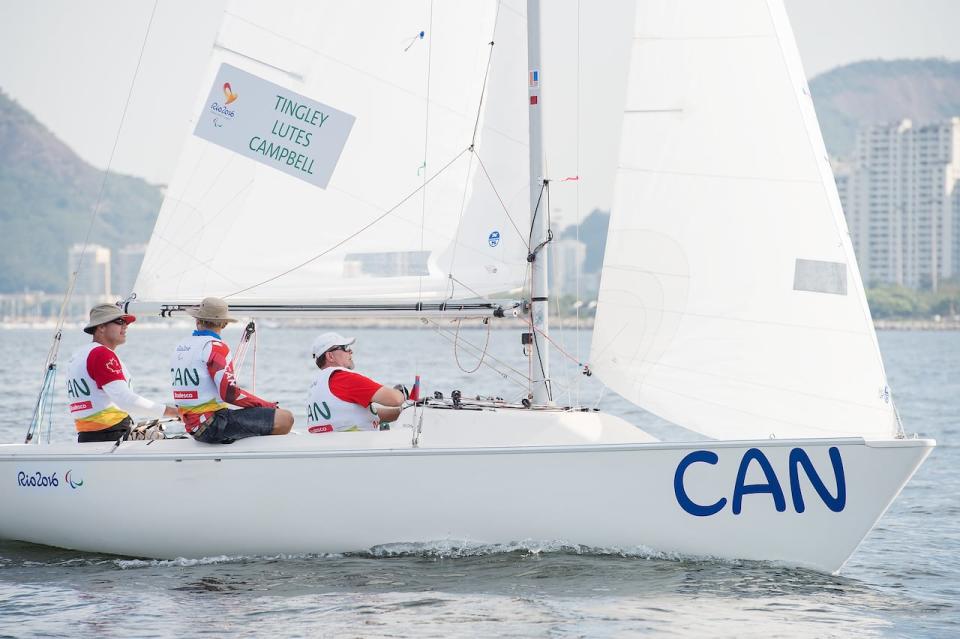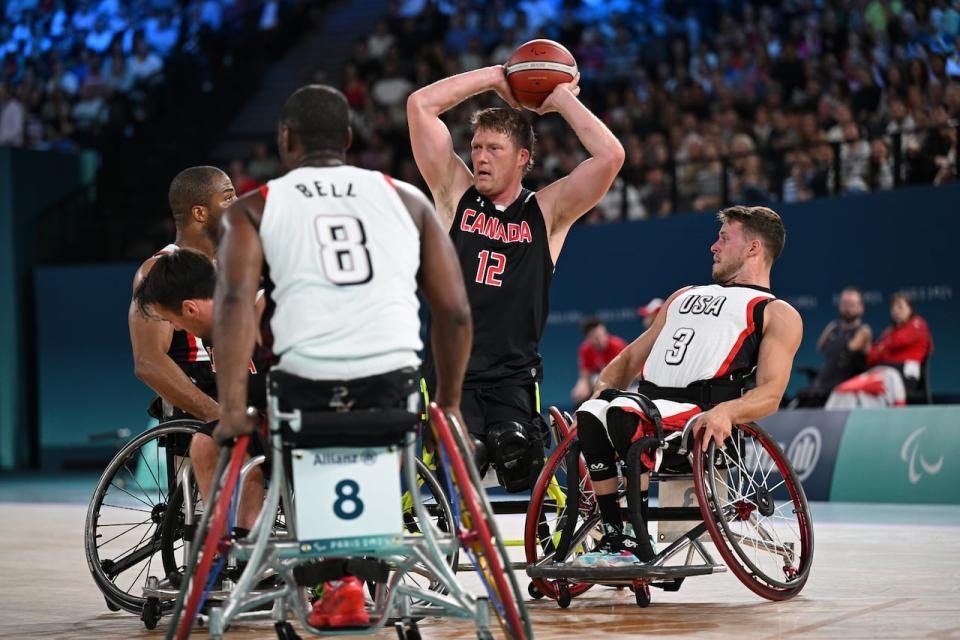


One year ago, the Paralympic Games weren’t even on 20-year-old Katie Pegg’s radar.
From Scarborough, Ont., Pegg was settling into Halifax last September for her first year at Saint Mary’s University.
But she found herself in Paris this week competing in the F46 shotput event at the Paralympic Games.
“To see how far I’ve come over this past year, and then to even be at this level, not many people get that opportunity,” she said Wednesday from the Olympic Village in Paris. She placed seventh in her event.
“The fact that I’ve been able to do this alongside so many other people supporting me, it’s definitely something to be proud of.”
‘I was like, I’m doing this’
Pegg was born with a missing radial bone in her right arm. She competes in a category for athletes with an upper-limb deficiency.
She didn’t know she met the criteria until last year.
It was only after she joined the university’s track and field team, where she finished fourth at the Atlantic University Sport championships, that her coach, Jodi Langley, flagged her as a possible parasport athlete.
“Once I found out I could compete … I was like, I’m doing this,” she said.
Pegg trains at the Canadian Sport Institute Atlantic in Halifax.
Evan MacInnis, the institute’s director of performance pathways, said Pegg’s success is a great example of what can happen when athletes are encouraged to get involved in parasport.
“Sometimes it’s knowing that an event like this exists, right?” he said Thursday.
“There’s many different sports with many different disciplines. Anyone can find a home.”

Paul Tingley, Scott Lutes, both from Nova Scotia, and Logan Campbell won sailing bronze at the Rio 2016 Paralympic Games. (Matthew Murnaghan/Canadian Paralympic Committee)
There were no Nova Scotia-born athletes at this year’s Paralympics, but Pegg and New Brunswick triathlete Kamylle Frenette both train at the Halifax training centre.
It hasn’t always been the case. There were seven in 2016, including bronze-medal sailors Scott Lutes and Paul Tingley.
MacInnis thinks the lack of Nova Scotians competing this year isn’t an issue of funding, but does believe that increased awareness of parasport could drive more interest.
There’s no simple path to getting involved in parasport, he said, but the more athletes are made aware of the options, the better the likelihood they’ll get involved.
Some athletes start training when they’re young, for instance, while others only become involved after dealing with an injury, or in Pegg’s case, learning later in life that they qualify.
Something for everyone, says Sport Nova Scotia
Nick Lenehan, Sport Nova Scotia’s equity, diversity and inclusion lead, says the increased complexity of parasport means that it can be difficult for parents and athletes to know where to start.
The organization recently created an online portal that outlines parasport programs across the province, which he said is a good resource for both parents and athletes.


In this image from the 2024 Paralympics, Patrick Anderson of Canada is challenged by Brian Bell and Talen Jourdan of the United States. (Tullio M. Puglia/IPC/Getty Images)
Sport Nova Scotia also has a loan program where specialized equipment, like the chairs used for wheelchair basketball or the sleds for sledge hockey, can be lent to interested organizations or community groups.
The best thing a parent can do, if they’re looking to get their kid involved, is to ask, he said.
Meanwhile, Pegg wants aspiring para-athletes of all ages to know they’re in control of their own destiny.
“At the end of the day, it’s your story, it’s yours to write, and don’t let anyone else tell you what you can and can’t do,” she said.
MORE TOP STORIES